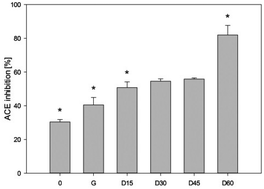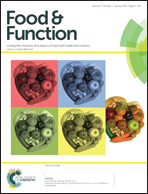Ex vivo digestion of carp muscle tissue – ACE inhibitory and antioxidant activities of the obtained hydrolysates
Abstract
In the digestive tract of humans, bioactive peptides, i.e. protein fragments impacting the physiological activity of the body, may be released during the digestion of food proteins, including those of fish. The aim of the study was to establish the method of human ex vivo digestion of carp muscle tissue and evaluate the angiotensin I-converting enzyme inhibitory and antioxidant activities of hydrolysates obtained after digestion. It was found that the hydrolysates of carp muscle tissue obtained with the three-stage method of simulated ex vivo digestion showed ACE inhibitory as well as antioxidative activities. It was demonstrated that the degree of hydrolysis depended on the duration of individual stages and the degree of comminution of the examined material. Although the applied gastric juices initiated the process of hydrolysis of carp muscle tissue, the duodenal juices caused a rapid increase in the amount of hydrolysed polypeptide bonds. The antihypertensive and antioxidative activities of the hydrolysates of carp muscle tissue increased together with progressive protein degradation. However, the high degree of protein hydrolysis does not favour an increase in the activity of free radical scavenging. The presented results are an example of the first preliminary screening of the potential health-promoting biological activity of carp muscle tissue in an ex vivo study.


 Please wait while we load your content...
Please wait while we load your content...